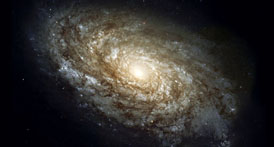 Where did it all begin? Human life, the universe… everything. Researchers at the Institute for the Science of Origins use multidisciplinary approaches and innovative techniques to pursue these questions from every angle. And they’re finding answers.
Where did it all begin? Human life, the universe… everything. Researchers at the Institute for the Science of Origins use multidisciplinary approaches and innovative techniques to pursue these questions from every angle. And they’re finding answers.
From dark matter and general relativity to mammal genetics and family trees, the interdisciplinary research sponsored by the institute includes anatomy, anthropology, astronomy, biochemistry, biomedical engineering, biology, cognitive science, genetics, geology and physics (among many more). The institute supports these studies by
- connecting researchers with similar interests;
- providing researchers with funding or help finding it;
- pooling research resources with our partners;
- encouraging the promotion and discussion of research findings.
How do things begin? Once begun, what leads them to increasing levels of complexity or specialization? Do imprints of these origins remain and, if so, how do we read them? What do they teach us about the past, present and future?
The cosmologist studying the growth of galaxies in the early universe asks these questions, but so does the paleo-anthropologist studying the development of upright walking, as well as the cognitive scientist trying to understand how the modern mind emerged. Even as planetary scientists study the development of our solar system, and evolutionary biologistsdisentangle the evolution of all the diverse life on Earth, they join with astronomers to seek evidence of these processes elsewhere — be it on the moons of Saturn or in the oceans of an Earth-like planet around some far-off star.
The medical scientist may be seeking both a better understanding of disease and the practical benefit of improved treatment while, for the astrophysicist, the motivation is the pursuit of pure knowledge — to answer questions that have been with us since before science.
Yet fundamentally they are all still origins scientists. It is the role of the ISO to bring them together — to educate, to learn and ultimately to collaborate.
